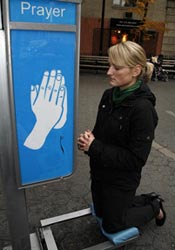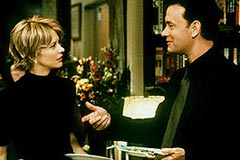 Religion in the public square has caused countless lawsuits and raises the ire of many an American in one direction or the other, pro or con. As a kid I remember our own town controversy about a nativity scene (literally) set up in the town square of Narragansett, RI around Christmas. Initially it just caused a stir, and then the controversy ratcheted up, well, to its very own Supreme Court case! (The nativity lost. My Dad is still bitter about it.)
Religion in the public square has caused countless lawsuits and raises the ire of many an American in one direction or the other, pro or con. As a kid I remember our own town controversy about a nativity scene (literally) set up in the town square of Narragansett, RI around Christmas. Initially it just caused a stir, and then the controversy ratcheted up, well, to its very own Supreme Court case! (The nativity lost. My Dad is still bitter about it.)
Well, apparently if you call something religious “Art” and put it in the public square, you’re golden. I find that fascinating–and rather clever if your goal is to open the public square to faith.
Here’s the scoop: the artist, Dylan Mortimer, a graduate of New York’s School of Visual Arts, has come up with “a way to talk about prayer in the public sphere– but with a bit of humor,” according to an article in the New York Post, by installing “a pair of colorful and cheeky prayer booths perched near the entrance to the Roosevelt Island tram in Midtown-replete with a “prayer” sign and an icon of folded hands dangling over the metal and blue-vinyl structures. If the fancy strikes, the pious can flip down a kneeling pad.”
This is sponsored by the city and it’s considered “public art.” And apparently, whether or not people are using the booths for prayer (some are), at the very least, people are having lots of discussions about the installation.
I think this is very interesting in a positive way–opening up a public space for prayer (of any kind, supposedly)–and providing a creative way for people to contemplate religion in the public square. What boggles my mind though, is that it seems okay to do religion in the public square as art, but (going back to that memorable event from my childhood), you can’t set up a nativity scene without ending up smacked down by the Supreme Court. And I get the issue with the nativity scene–why it’s exclusive, etc. But I can’t help but wonder: should folks start calling holiday religious set-ups “Art” as a way to get away with them?
I think the prayer booths set an interesting precedent in the above regard. What do you think? Is this a clever way to bring faith back into the public square?


